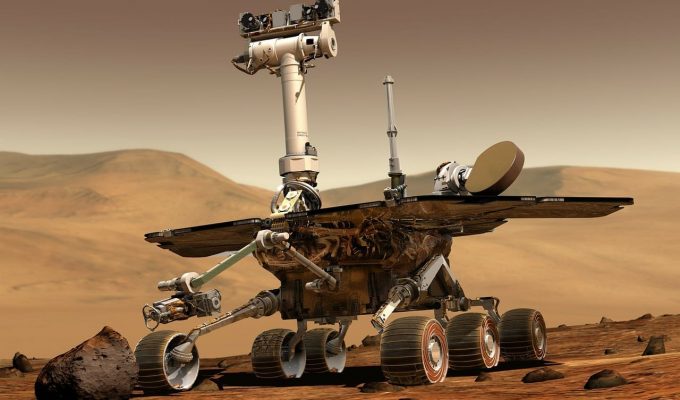In the search for extraterrestrial life, one substance plays a special role alongside water and oxygen: methane. This gas is present in trace amounts in the Martian atmosphere and its concentration fluctuates greatly. Some researchers had therefore already speculated that the activity of microbes was the origin of the methane on Mars. As researchers report now in the technical periodical “Geophysical Research Letters”, these fluctuations are however not necessarily an indication of life. Also electrical discharges over ice surfaces, which originate from so-called dust devils, can produce methane. The researchers were able to simulate this in the laboratory.
Dust devils are small tornados with strong outward winds that can generate electric fields. This causes discharges that set off a chemical reaction chain that produces methane. This process could explain the local formation of methane in the Martian atmosphere without microbes playing a role. “In our laboratory experiments we were able to demonstrate a new production mechanism for methane based on the effect of electrical discharges over icy surfaces,” explains one of the authors, Arturo Robledo-Martínez from the Universidad Autónoma Metropolitana in Mexico City. Even on earth, dust devils can generate strong electric fields of up to 10,000 volts per meter. Since dust devils in the thin Martian atmosphere can be up to 50 times wider and 10 times higher than on Earth, they can generate correspondingly larger discharges, in which carbon dioxide and ice are first broken down. The reaction products are then converted into methane via intermediate steps.
The existence of large whirlwinds on Mars has been documented since the images taken by the Viking probes in the 1970s. The model presented here also makes sense from a geographical point of view. On Mars, ice is not only found at the poles but also at mid to high latitudes. Sandstorms and dust devils also accumulate in these latitudes. The scientists have calculated that, if the efficiency of the ice is comparable to their laboratory measurements, about one ten-millionth of the solar energy would have to be converted into such discharges in order to explain the existing methane concentrations.
For the production of methane on Mars, several other pathways have been proposed in the past, from soil microbial generation to volcanic origin. The now published reaction pathway has the advantage of being able to describe the strong local variation of methane concentrations well. In order to obtain better information about the distribution of gases in the Martian atmosphere, the European Space Agency ESA is currently negotiating with the Russian space agency Roskosmos about the ExoMars mission, which consists of two probes and is intended to investigate the trace gases of our neighboring planet.





